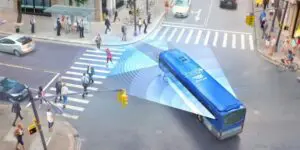Twitter Feed
Transformation Network
The Achilles heel of every transformative business model is their reliance on ever increasing amounts of data that need to be transported quickly across wide area networks and processed at…
Essential Characteristics of Cloud Computing as Digital Transformation
Hybrid IT blends traditional datacenters, managed service providers, and cloud service providers to deliver the necessary mix of information technology services. This IT consumption model enables a composable infrastructure which…
Transformation Innovation
4 Factors Driving Digital Transformation ROI The critical assessment factors for cloud ROI risk probability are the following: Infrastructure utilization Speed of migration to cloud Ability to scale business/mission processes…
Transformation Frameworks
Digital transformation necessitates changes in an organization’s operational processes. According to Harvard, a focus on operations can lead to business process optimization and entirely new revenue streams. Three common routes…
Transformation Infrastructure
Hybrid IT enables a composable infrastructure which describes a framework whose physical compute, storage, and network fabric resources are treated as services. Resources are logically pooled so that administrators need…
Essential Characteristics of Cloud Computing as Digital Transformation
A survey of 2,000 executives conducted by Cognizant in 2016 identified the top five ways digital transformations generate value: Accelerating speed to market Strengthening competitive positioning Boosting revenue growth Raising…
Embrace Transformation
From a business perspective, differentiating business processes and quality customer service are central to overall success. Business leaders must therefore clearly identify and measure how information technology contributes to the…
Computer Vision Advances Zero-Defect Manufacturing
by Kevin L. Jackson Electronics manufacturers operate in a challenging environment. It’s hard enough to keep up with the ever-accelerating rate of change in the industry. Now customers want increasingly…
Real-Time Analytics Power the Roadway of the Future
By Kevin L. Jackson The complexities of citywide traffic are pushing the limits of existing transportation management systems. Outdated infrastructure is based on proprietary, single-purpose subsystems, making it costly to…
Thriving on the Edge: Developing CSP Edge Computing Strategy
Communications Service Providers (CSPs) are facing significant business model challenges. Referred to generally as edge computing, the possibilities introduced by the blending of 5G networks and distributed cloud computing technologies are…
- Rise of the “Cloud System Integrator” (a.k.a. Cloud Service Broker) – Traditional system integrators will finally realize that their current product and labor based business model is about to go the way of the dinosaurs. Customers will act on market shifts that makes the purchase and resale of hardware and software no longer viable opting instead for the integration of cloud-based services. They will insist on the use of more agile commodity IT services in the development of their custom systems of record.
- Privacy will be more important than security – Expect the national debate about data privacy to escalate into a new national law that defines privacy and provides cloud users new protections from data brokers. Identity will be the new security perimeter for consumers of cloud services. As the United States Department of Homeland Security rolls out Phase II of the Continuous Diagnostics and Mitigation Program, multinational corporations across all industries will take notice.
- Wearables will become the most impactful mobile device – BYOW will replace BYOD as the primary concern of enterprise IT managers.
- Linux Containers take center stage – Linux Containers of all forms, will mature and become interoperability building blocks of the cloud computing world. The Microsoft-IBM Cloud Computing Alliance will be model as other IT behemoths partner to take down Amazon Web Services.
-
 Hybrid IT grows in the enterprise – Hybrid IT will grow in importance as enterprises realize that the exclusive use of private IT infrastructure is no longer a sustainable practice. Membership in industry specific community clouds will accelerate as public cloud security is improved and SLAs are enhanced to meet new government IT security standards and requirements.
Hybrid IT grows in the enterprise – Hybrid IT will grow in importance as enterprises realize that the exclusive use of private IT infrastructure is no longer a sustainable practice. Membership in industry specific community clouds will accelerate as public cloud security is improved and SLAs are enhanced to meet new government IT security standards and requirements. - Social Media takes over – Social media will usurp other forms of marketing to become the leading tool for influence marketing and initial customer contact. Today the average Fortune 100 brand has 320 social media accounts. This will grow and the social media marketing trend will spread down into the SMB market. As cloud enabled social media analytics grow in importance, the Chief Marketing Officer will become the leading internal stakeholder and voice in directing IT requirements.
- International Cyber Security Regulations – The lack of mandatory cyber security requirements in the commercial sector will rise to threaten national economic stability as hackers expand their activities and ability to disrupt commerce on a global scale. International political bodies will finally tackle the need for global agreements on data privacy and security
 Data center marketplace disruption – The data center marketplace will experience severe disruption as global cloud service providers start to deploy offshore mega data centers. Driven by reduced energy cost and a more tractable legal environment, onshore data centers will be downsized into regional “data caching centers”.
Data center marketplace disruption – The data center marketplace will experience severe disruption as global cloud service providers start to deploy offshore mega data centers. Driven by reduced energy cost and a more tractable legal environment, onshore data centers will be downsized into regional “data caching centers”.- Healthcare gets REALLY personal – Drastic reduction in the cost to sequence DNA will spur a rapid rise in personalized medicine and an adjacent requirement for real-time health monitoring. Wearable computing devices will be miniaturized and implanted as a means for addressing this new market.
 Autonomous vehicles become commonplace – Autonomous vehicles will become a normal roadway and airway fixture as broadband wireless connectivity, advanced geospatial services and on-board computer processing power increases their capabilities and reduces their cost. Legal concerns will also take center stage. The use of airborne drones, for instance, will bump upagainst privacy concerns as neighbors start to spy on neighbors.
Autonomous vehicles become commonplace – Autonomous vehicles will become a normal roadway and airway fixture as broadband wireless connectivity, advanced geospatial services and on-board computer processing power increases their capabilities and reduces their cost. Legal concerns will also take center stage. The use of airborne drones, for instance, will bump upagainst privacy concerns as neighbors start to spy on neighbors.- 3D Printing comes home – Additive manufacturing will come home as a household appliance. Business models that incorporate the cost of 3D printers into home mortgages or long term leases will revolutionize certain product market segments. Online shopping, purchase, and the digital delivery of physical products will become a reality
- Atoms and Bits blur reality – Business models that blur the boundaries between atoms and bits, like Uber and AirBNB, will continue to challenge municipal laws and regulations. Local licensing of taxis, hotels and similar businesses will implode under the weight of digital transformation. Regional and national courts around the world will try to balance competing priorities but time will be their enemy.
(This post was written as part of the Dell Insight Partners program, which provides news and analysis about the evolving world of tech. To learn more about tech news and analysis visit TechPageOne. Dell sponsored this article, but the opinions are our own and don’t necessarily represent Dell’s positions or strategies.)
( Thank you. If you enjoyed this article, get free updates by email or RSS – © Copyright Kevin L. Jackson 2012)
Cloud Computing
- CPUcoin Expands CPU/GPU Power Sharing with Cudo Ventures Enterprise Network Partnership
- CPUcoin Expands CPU/GPU Power Sharing with Cudo Ventures Enterprise Network Partnership
- Route1 Announces Q2 2019 Financial Results
- CPUcoin Expands CPU/GPU Power Sharing with Cudo Ventures Enterprise Network Partnership
- ChannelAdvisor to Present at the D.A. Davidson 18th Annual Technology Conference
Cybersecurity
- Route1 Announces Q2 2019 Financial Results
- FIRST US BANCSHARES, INC. DECLARES CASH DIVIDEND
- Business Continuity Management Planning Solution Market is Expected to Grow ~ US$ 1.6 Bn by the end of 2029 - PMR
- Atos delivers Quantum-Learning-as-a-Service to Xofia to enable artificial intelligence solutions
- New Ares IoT Botnet discovered on Android OS based Set-Top Boxes













